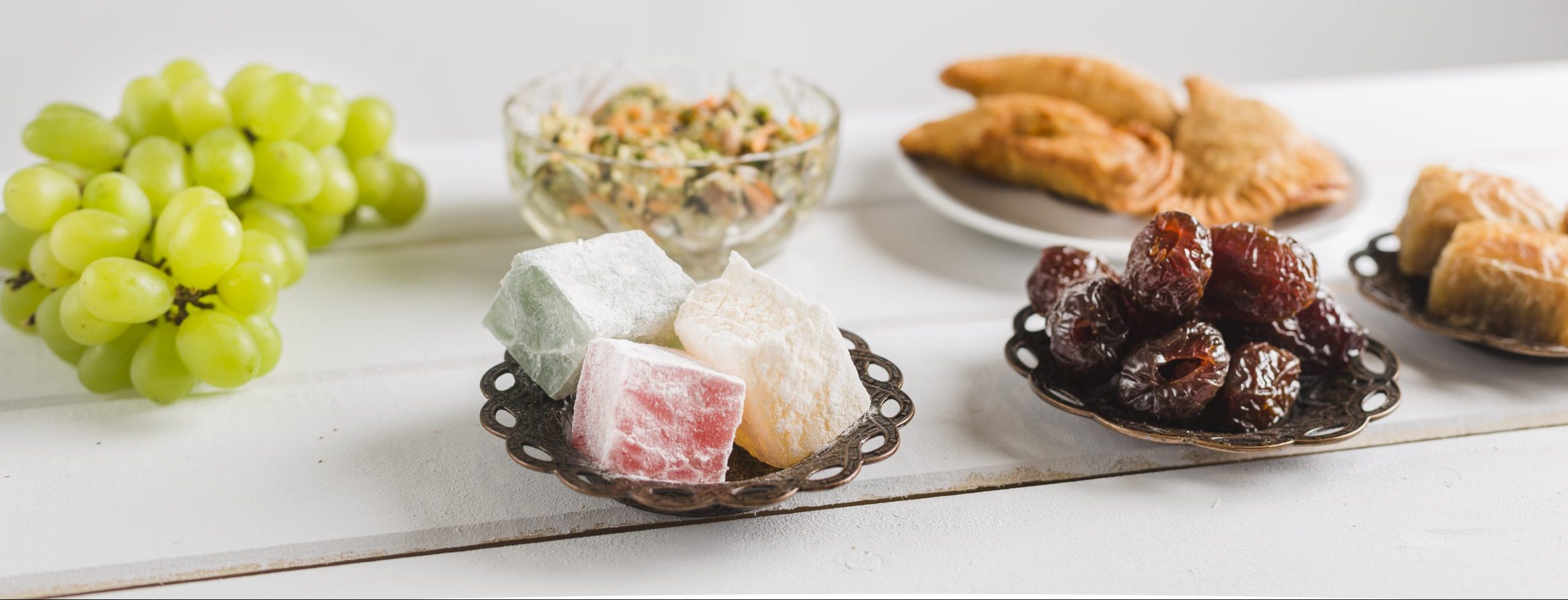Fasting, abstinence from food or drink or both, for health, ritualistic, religious, or ethical purposes. The abstinence may be whole or partial, prolonged, brief, or intermittent. Since antiquity, fasting has been encouraged and practiced by medical professionals, the founders and adherents of numerous religions, culturally designated individuals such as hunters or candidates for initiation rites, and individuals or groups as a form of protest or expression of dissent against violations of social, ethical, or political principles1.
For instance, fasting during Ramadhan is one of the religious fasting that requires for Muslims with one month period during Ramadhan. During this holy month, Muslims fast from dawn until the setting of the sun, refrain from eating and drinking between those hours2. However, there are various types of fasting with different purposes around the world.
4 Types of Fasting
- Alternate Day Fasting – Alternate eating days with fasting days in which no energy-containing foods or beverages are consumed (foods and beverages consumed as ad libitum – as often as necessary or desired)3.
- Modified Fasting Regimens – Allow you to consume 20–25% of your energy requirements on scheduled fasting days. On scheduled fasting days, you can consume 20-25% of your energy requirements. This approach is used in modified regimens such as the popular 5:2 diet, which involves severe energy restriction on 2 non-consecutive days each week and ad libitum eating for the other five days3.
- Time-Restricted Feeding – These protocols allow people to consume as much energy as they want during certain times, which frequently results in fasting periods3.
- Religious Fasting -Fasting regimens are often practiced for religious and spiritual purposes3, such a during Ramadhan fasting. People who follow a religious faith may choose to fast to develop their self-control and spiritual vitality, as a type of self-punishment, to mark important occasions, to adhere to tradition, or even to represent and practice detachment from the outside world7.

3 Ways to Keep Fit and Healthy During Ramadhan
- To avoid dehydration during fasting, it is important to maintain a high level of water intake. This means drinking at least 8-12 glasses of water vary on the gender and weight of person in between Iftar and Suhoor5. Sufficient water intake is crucial to avoid water depletion in your body, which can lead to feelings of fatigue. Ensuring an elevated level of water intake can help to prevent those from happening5.
- Exercise at the right time is vital during Ramadhan. When exercising during daylight, keep it simple. If you are an early riser, get up an hour earlier before Suhoor to exercise. Perform your intense exercises then, so you can recharge your water and energy level later2.
- Never skip Suhoor (pre-dawn meal) as this meal provides essential nutrients that will sustain the body throughout the day5. It is crucial to plan a meal with well-balanced nutrition that incorporates the following ingredients to ensure you receive adequate nutrition during the day.

Benefits of Fasting
Fasting promotes blood sugar control by reducing insulin resistance which could be useful for suffering diabetes. A study on 10 individuals with type 2 diabetes found that short-term fasting dramatically reduced blood sugar levels. However, keep in mind that some research suggests that fasting may affect blood sugar levels differently between men and women. Moreover, fasting aids weight loss by limiting calorie intake and boosting metabolism. Theoretically, restricting your intake of all or certain foods and drinks lower your overall calorie intake, which can accelerate your weight loss over time4. A research study discovered that over the course of 12 to 24 weeks, whole day fasting could effectively lower body fat and reduce body weight by up to 9%. In addition, fasting has greater reductions in body fat and belly fat compared to continuous calorie restriction4.
Healthy Eating Choices for Ramadan
To maintain optimal health and energy levels during Ramadan, it is important to select foods that you’ll digest slowly and keep your feeling fuller longer. Avoid foods like refined grains and added sugars which may leave you feeling hungry and unsatisfied shortly after consumption8. What you consume before your fast can help promote a flexible metabolic state, which is one of the goals of fasting11. Simply said, you want to select foods that help stabilize your blood sugar since this will make it easier for your body to switch between different fuel sources, like glucose and fatty acids11. Your body will be able to use your own fat reserves as a source of energy, resulting in more consistent energy levels throughout a fast and an increase in long-term weight loss11. For example, complex carbohydrates are a good example of slow-releasing carbohydrates that can help regulate blood sugar levels while also providing a feeling of fullness. Both complex and simple carbohydrates are converted to glucose in the body and used as a source of energy in cells throughout the body, including the brain9. Any unused glucose is stored in the liver and muscles as glycogen for use later9. Complex carbohydrates such as oats, wheat, cereals, and lentils5.
Other than that, fibre is a great way to balance your meals and optimize your metabolism in preparation for a fast. High-fibre foods such as broccoli, bran, seeds, potatoes, cereal and dates are crucial to eat to help you feel full during fasting as well as improve digestion system6. Moreover, foods that are rich with protein include dairy foods such as nut and eggs also good to consume during fasting because it helps building muscle5,10. However, red meat like bacon, sausage and hamburger meat as well as some other types of protein are typically high in fat and increase LDL cholesterol (the “bad” type) increase the risk of heart disease10. Getting protein as much as possible is vital for keeping you full and building muscle, especially, especially when you are eating less6.

References
1The Editors of Encyclopaedia Britannica. (2019). Fasting. In Encyclopædia Britannica. https://www.britannica.com/topic/fasting
2Tips for Staying Fit and Healthy while Fasting during Ramadan. (n.d.). www.prubsn.com.my. Retrieved from https://www.prubsn.com.my/en/takaful-articles/tips-for-staying-fit-and-healthy-while-fasting-during-ramadan/#:~:text=Keep%20your%20exercise%20light%20during
3Patterson, R. E., Laughlin, G. A., LaCroix, A. Z., Hartman, S. J., Natarajan, L., Senger, C.M., Martínez, M. E., Villaseñor, A., Sears, D. D., Marinac, C. R., & Gallo, L. C. (2015). Intermittent Fasting and Human Metabolic Health. Journal of the Academy of Nutrition and Dietetics, 115(8), 1203–1212. https://doi.org/10.1016/j.jand.2015.02.018
4Ajmera, R. (2022). 8 Health Benefits of Fasting, Backed by Science. Healthline. https://www.healthline.com/nutrition/fasting-benefits#weight-loss
5Ff, T. (2020, April 15). Here’s How to Stay Fit and Healthy During Ramadan. www.fitnessfirst.co.id. https://www.fitnessfirst.co.id/blog/stay-fit-and-healthy-during-ramadan-fasting
6Seitz, A. (2022). The Best Foods for an Intermittent Fasting Diet. Greatist. https://greatist.com/eat/what-to-eat-on-an-intermittent-fasting-diet#foods-to-eat-on-if
7Fasting. (2022July 14). New World Encyclopedia. https://www.newworldencyclopedia.org/p/index.php?title=Fasting&oldid=1073010.
8Cassetty, A. D., Samantha. (2020). What to eat when intermittent fasting for health and hunger pains. Insider. https://www.insider.com/guides/health/diet-nutrition/what-to-eat-when-intermittent-fasting
9Manetti, S. (2022). Complex carbohydrates: MedlinePlus Medical Encyclopedia Image. Medlineplus.gov. https://medlineplus.gov/ency/imagepages/19529.htm#:~:text=Complex%20carbohydrates%20are%20found%20in
10Castaneda, R. (2020). Intermittent Fasting: Foods to Eat and Avoid. US News & World Report; U.S. News & World Report. https://health.usnews.com/wellness/food/articles/intermittent-fasting-foods-to-eat-and-avoid 11Grant, N. (2023, February 14). How to Prepare for Fasting: An In-Depth Guide. Zero. https://zerolongevity.com/blog/preparing-for-a-fast/#:~:text=Choose%20fiber%20in%20its%20whole






